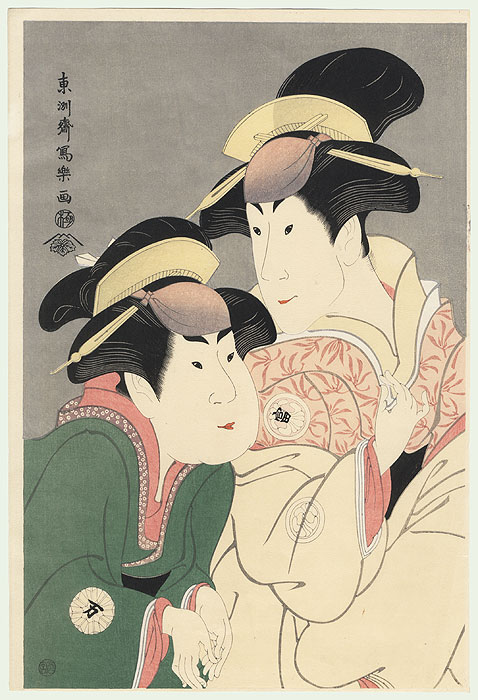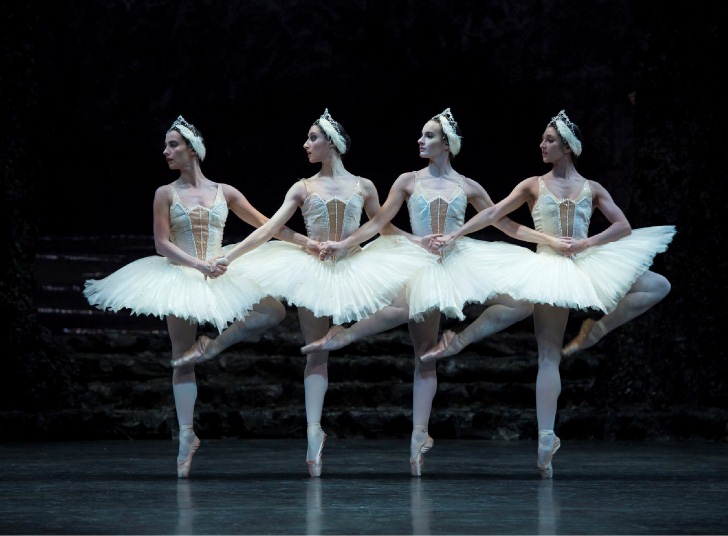LES BALLET TROCKADERO DE MONTE CARLO
 |
| The Trocks |
Recently a ballet friend called Brian (AKA "La plus celebre du monde") told me he was was teaching the Trockaderos whilst they were on tour of the UK. I begged him to arrange an opportunity for me to draw their class and rehearsals, last weekend my wish was granted and I spent two happy afternoons and evenings watching this extraordinary ballet company at work.
If you do not already know who "the Trocks" are you must watch this video:
The all male company were formed in the1970s and have a strong following amongst ballet fans who appreciate both their wit and their classical technique. Before arriving I wrote to the director, Tory Dobrin, telling him how important this opportunity was for me because I have always been influenced by the works of Japanese Ukiyo-e (Fleeting Floating World) artists who in the 18- 19th centuries made idealised portraits of the beautiful courtesans in the pleasure quarters of Kyoto and Edo.
I explained that there was one Ukiyo-e artist who is an enigma, he went his own individual way and became known for uncompromising characterisations of the Kabuki actor-dancers who were masters of impersonating women on stage. His name was Sharaku.
 |
| Utamaro was a master at idealised beauty |
I explained that there was one Ukiyo-e artist who is an enigma, he went his own individual way and became known for uncompromising characterisations of the Kabuki actor-dancers who were masters of impersonating women on stage. His name was Sharaku.
 |
| Sharaku (active 1794 - 1795)
|
I got a fairly instant response "Please keep in mind, we do not do female impersonation....we portray Ballerinas on stage with an eye to the fact we are men doing these roles in costumes and wigs, make up etc...but we are not trying to impersonate females". Tory's interesting response has occupied my mind a lot and is a good start point for this blog posting.
On the first day I watched the class and rehearsals from the wings. This was a mistake because I was too close and could not see the wonderful line that is a product of their technique. My drawings reflected my difficulties. The second day was better because I had watched them on stage the evening before and I took a better position from which to study their movements
This study is of a very tall dancer with bony features called Josh. He was very friendly and interested in what I was doing so we became friends.
 |
| Josh |
 |
| Josh |
and Josh leads an equally colourful life off stage, here he is visiting Stonehenge
Alberto is another characterful dancer. He was slender, naturally elegant and feminine. When people like this enter a room everyone is aware of their personality. I think Sharaku would have loved him as a subject, for a few hours he was mine to draw.
This dancer was manly
This dancer had brilliant jumps
Tory's letter had intimated that it is not their maleness that makes the Trocks different from other ballet companies, it is their determination to be themselves. This is a picture of the Birmingham Royal Ballet dancing the cygnets, each dancer is chosen for their perfection; brilliant technique, beauty and height. They are chosen to fit together in perfect harmony
 |
| Birmingham Ballet Dance of the cygnets. Photos Bill
Cooper Here are the Trocks having fun with the same dance |
 |
| Photo_LoisGreenfield |
and this has benefits we can all learn from. One dancer was very striking, his name is Philip Martin-Nielson. He is not tall, maybe even slightly stocky, he had a mop of thick blond hair that he held in place with a large plastic hair clip.
 |
| Philip Martin-Nielson |
I never managed to make a drawing that captured his perfect pointed extensions and neat feminine steps. He danced the role of Odette, the swan maiden who bewitches Prince Siegfried in Swan Lake.
Philip was born in New York and...."at the age of three was diagnosed as profoundly
autistic – unable to speak, make eye contact with others or focus on the
simplest task. He was so severely withdrawn that doctors and therapists
warned his mother that there was little chance of him ever leading an
independent life." His life has been managed and developed through ballet "the first time he told
his mother he wanted to dance was one of the first, halting verbal
communications he’d been able to make."......"Now that terrible early
diagnosis seems impossible to believe. Charming, smiling and candid,
it’s only the occasional hesitancy over an expression or a choice of
word that betrays any sense that language was ever a problem".
I would add that Philip's acting is a feast of facial expressions and body language. In his off stage life he has "a nightlife alter ego" that he calls Mariette Moure.
Dancers like Philip are being themselves, and this exemplifies the culture from which his dance company has grown and flourished.
The Trocks appear to mock the perfection of the Royal Ballet, but perhaps they have a different message, perhaps they are saying we are too quick to label our differences as difficulties; we atomise our view of people around us into men and women, we point out when they have "autism,
dyslexia or dyspraxia". When we do this we fail to celebrate the breadth of our humanity and our spirit's ability to find it's own perfection and reconciliation with the world.
I think I understand why Tory was so keen to tell me the Trocks are not impersonators, I also think the enigma of Sharaku's independence of spirit belongs with their view of the world.
I think I understand why Tory was so keen to tell me the Trocks are not impersonators, I also think the enigma of Sharaku's independence of spirit belongs with their view of the world.


























































